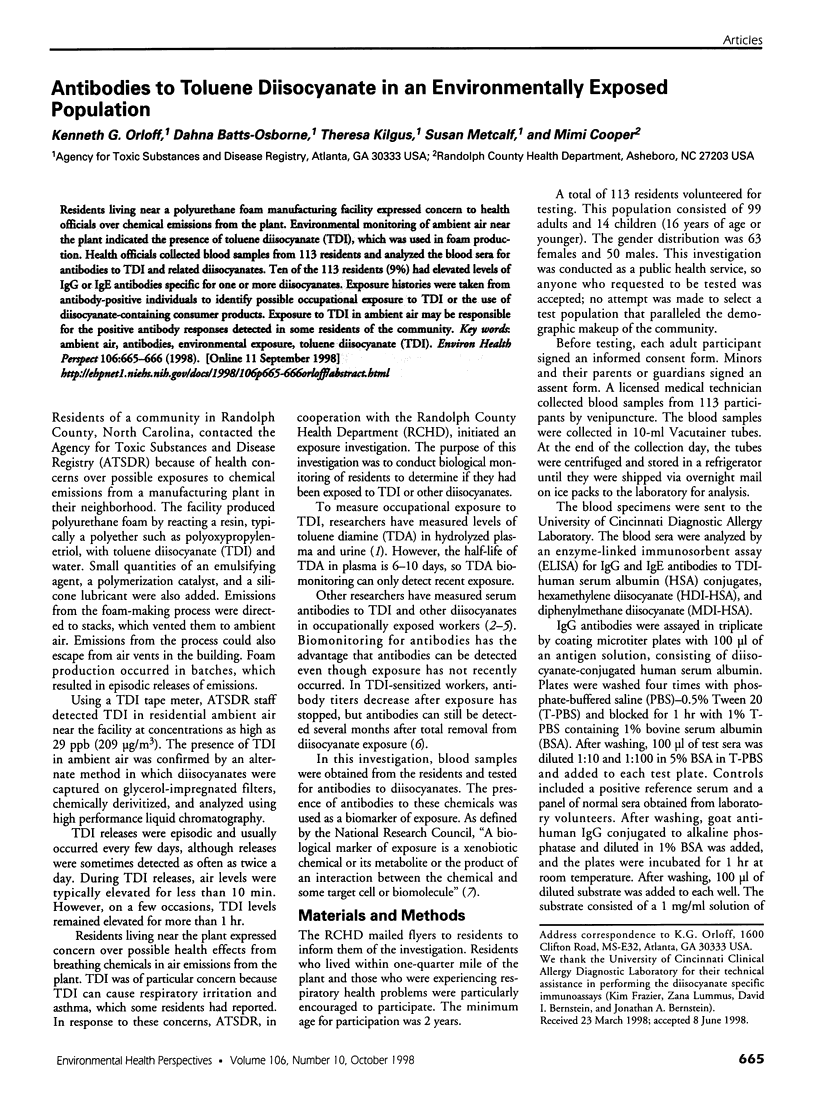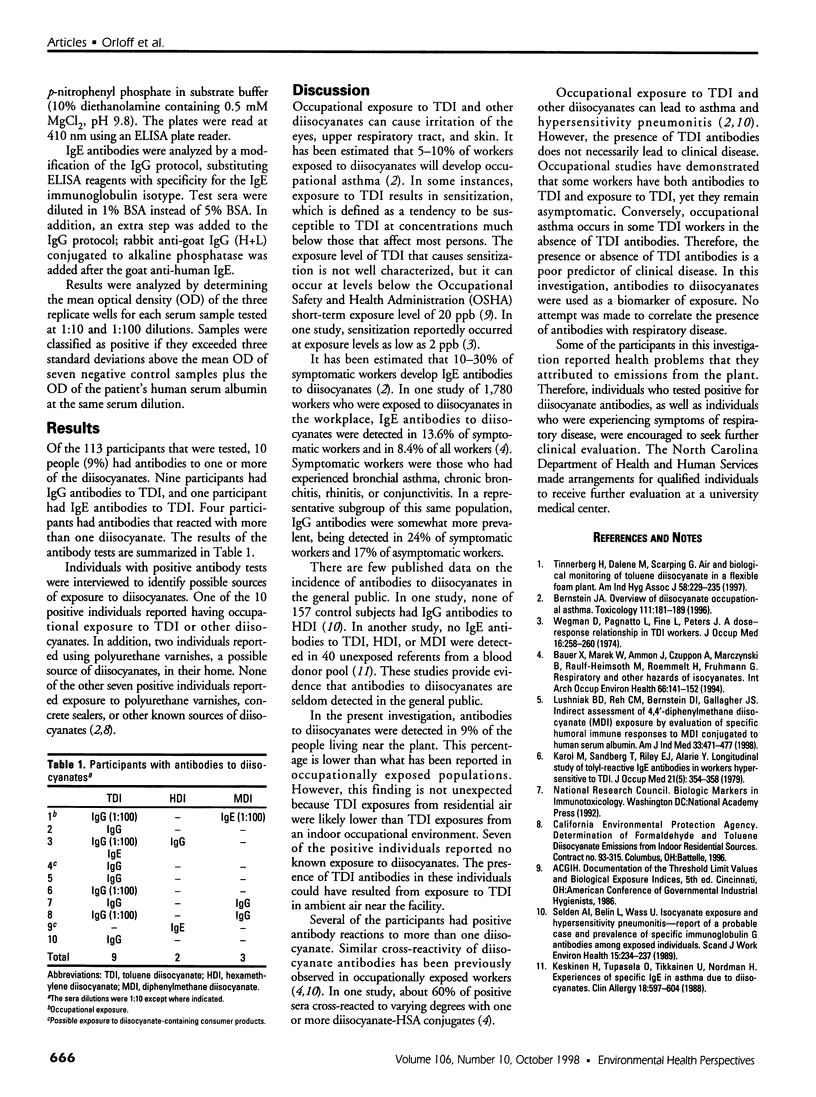Abstract
Residents living near a polyurethane foam manufacturing facility expressed concern to health officials over chemical emissions from the plant. Environmental monitoring of ambient air near the plant indicated the presence of toluene diisocyanate (TDI), which was used in foam production. Health officials collected blood samples from 113 residents and analyzed the blood sera for antibodies to TDI and related diisocyanates. Ten of the 113 residents (9%) had elevated levels of IgG or IgE antibodies specific for one or more diisocyanates. Exposure histories were taken from antibody-positive individuals to identify possible occupational exposure to TDI or the use of diisocyanate-containing consumer products. Exposure to TDI in ambient air may be responsible for the positive antibody responses detected in some residents of the community.
Full text
PDF

Selected References
These references are in PubMed. This may not be the complete list of references from this article.
- Baur X., Marek W., Ammon J., Czuppon A. B., Marczynski B., Raulf-Heimsoth M., Roemmelt H., Fruhmann G. Respiratory and other hazards of isocyanates. Int Arch Occup Environ Health. 1994;66(3):141–152. doi: 10.1007/BF00380772. [DOI] [PubMed] [Google Scholar]
- Bernstein J. A. Overview of diisocyanate occupational asthma. Toxicology. 1996 Jul 17;111(1-3):181–189. doi: 10.1016/0300-483x(96)03375-6. [DOI] [PubMed] [Google Scholar]
- Karol M. H., Sandberg T., Riley E. J., Alarie Y. Longitudinal study of tolyl-reactive IgE antibodies in workers hypersensitive to TDI. J Occup Med. 1979 May;21(5):354–358. [PubMed] [Google Scholar]
- Keskinen H., Tupasela O., Tiikkainen U., Nordman H. Experiences of specific IgE in asthma due to diisocyanates. Clin Allergy. 1988 Nov;18(6):597–604. doi: 10.1111/j.1365-2222.1988.tb02911.x. [DOI] [PubMed] [Google Scholar]
- Lushniak B. D., Reh C. M., Bernstein D. I., Gallagher J. S. Indirect assessment of 4,4'-diphenylmethane diisocyanate (MDI) exposure by evaluation of specific humoral immune responses to MDI conjugated to human serum albumin. Am J Ind Med. 1998 May;33(5):471–477. doi: 10.1002/(sici)1097-0274(199805)33:5<471::aid-ajim6>3.0.co;2-v. [DOI] [PubMed] [Google Scholar]
- Seldén A. I., Belin L., Wass U. Isocyanate exposure and hypersensitivity pneumonitis--report of a probable case and prevalence of specific immunoglobulin G antibodies among exposed individuals. Scand J Work Environ Health. 1989 Jun;15(3):234–237. doi: 10.5271/sjweh.1857. [DOI] [PubMed] [Google Scholar]
- Tinnerberg H., Dalene M., Skarping G. Air and biological monitoring of toluene diisocyanate in a flexible foam plant. Am Ind Hyg Assoc J. 1997 Mar;58(3):229–235. doi: 10.1080/15428119791012883. [DOI] [PubMed] [Google Scholar]
- Wegman D. H., Pagnotto L. D., Fine L. J., Peters J. M. A dose-response relationship in TDI workers. J Occup Med. 1974 Apr;16(4):258–260. [PubMed] [Google Scholar]


